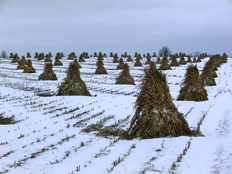The Problems
Crop Yields Expand,
but Nutrition Is Left Behind
Though crops like tomatoes are being produced in greater abundance, their nutritional value has declined.
According to the report, s food produces 10 to 25 percent less iron, zinc, protein, calcium, vitamin C, and other nutrients, the studies show. Researchers from Washington State University who analyzed 63 spring wheat cultivars grown between 1842 and 2003 found an 11 percent decline in iron content, a 16 percent decline in copper, a 25 percent decline in zinc, and a 50 percent decline in selenium.
Source: http://www.worldwatch.org/node/5339
2220 (2006)
These results suggest that genetic gains in the yield of US hard red winter wheat have tended to reduce seed Fe, Zn, and Se concentrations. From Sciencedirect.com
Evidence of decreasing mineral density in wheat grain over the last 160 years
Multiple regression analysis showed that both increasing yield and harvest index were highly significant factors that explained the downward trend in grain mineral concentration.
The Solution
Nutritional content in food is directly related to Healthy Soils. The articles referenced on the left relate nutrient loss to production and farming processes with emphasis on yield.
For Example
Grass fed beef and dairy nutrition:
From Consumer Reports
January 2018 page 6:
“We recommend choosing grass-fed meat and dairy products when possible. They are lower in total fat than those from grain-fed cattle, and the mix of fats they contain may be healthier. Grass-fed has a more healthful ratio of omega-6 polyunsaturated fatty acids to omega-3s. Too much omega-6 fats in your diet can cause inflammation, but omega-3s are anti-inflammatory. More of the saturated fat in grass-fed is stearic acid, a type of fatty acid that doesn’t raise blood cholesterol. Eating grass is also better for the cows: Grazing is a natural behavior, and cows that don’t eat grain are less likely to suffer from gastrointestinal problems.. These benefits come into play, however, only if the animals were 100 percent grass-fed. Look for products with seals such as American Grassfed or PCO Certified 100% Grassfed to ensure that the claim was verified.”
Nutrition in our Food is an Expectation—
But Nutrient Content is Dropping Steadily

